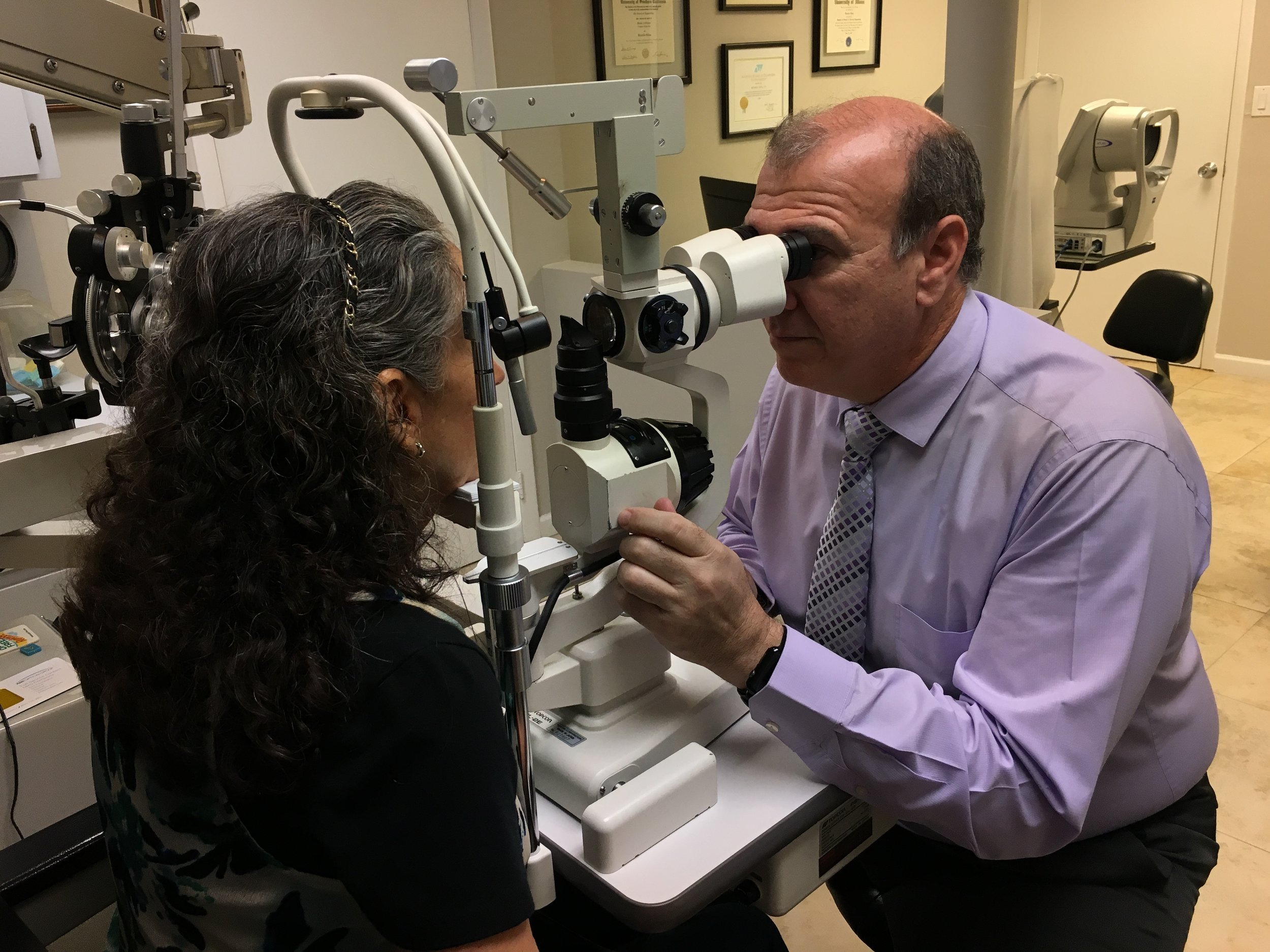How an Eye Doctor Can Change Your Vision Health in Chino
How an Eye Doctor Can Change Your Vision Health in Chino
Blog Article
Checking Out the most up to date Technological Developments in Optometry and What They Mean for Optometrists
In the ever-evolving area of optometry, current technological advancements are improving exactly how professionals approach eye care. From the accuracy of Optical Coherence Tomography to the nuanced understandings supplied by AI-driven diagnostic tools, these developments are setting new requirements in client analysis and therapy. Teleoptometry is poised to redefine ease of access, ensuring that experience transcends geographical restrictions. As these improvements penetrate the technique, optometrists are faced with the challenge of embracing these tools to boost individual results. Yet, the concern remains: exactly how will these technical shifts redefine the functions and duties within the profession?
Technologies in Diagnostic Tools
Progressing the field of optometry, advancements in diagnostic devices have actually revolutionized the means eye treatment experts examine and diagnose ocular problems and aesthetic impairments. The past decade has experienced considerable technological improvements, making it possible for more accurate and extensive examinations. Optical Comprehensibility Tomography (OCT), for instance, offers high-resolution cross-sectional pictures of the retina, enabling the very early detection of diseases such as glaucoma and age-related macular deterioration. This non-invasive imaging technique has actually ended up being essential in contemporary optometric method.
Another key development is the intro of advanced corneal topography systems, which map the surface curvature of the cornea with precision. These devices are specifically useful for suitable get in touch with lenses and detecting corneal conditions. Digital retinal imaging has transformed traditional ophthalmoscopy, offering comprehensive, panoramic views of the retina that facilitate thorough visual examinations.
The advancement of wavefront aberrometry has additionally been vital, enabling the analysis of refractive errors with unequaled accuracy (Eye Doctor). This technology aids in personalizing corrective lenses and boosting medical end results for refractive surgeries. Collectively, these analysis developments equip optometrists to supply remarkable patient treatment, ensuring very early treatment and tailored treatment methods, ultimately improving visual health results
AI in Patient Monitoring
Structure on the foundation of cutting-edge analysis tools, the incorporation of expert system (AI) in client administration stands for a transformative leap for optometry. AI systems are progressively utilized to enhance effectiveness, accuracy, and personalization in person treatment. By assessing substantial quantities of data, AI can determine patterns and forecast possible ocular problems, allowing optometrists to tailor interventions better. This capacity is vital in managing chronic eye conditions such as glaucoma and diabetic person retinopathy, where very early discovery and continual tracking are vital.
Additionally, AI-driven platforms help with structured person communications and administrative procedures. Automated organizing, digital consultations, and personalized follow-up plans not just improve patient complete satisfaction however likewise enhance time administration for professionals. These systems can triage patients based on the urgency of their problems, ensuring that those in vital need obtain prompt focus.
In addition, AI improves decision-making by supplying optometrists with evidence-based referrals and treatment paths. By integrating data from electronic wellness documents, AI tools offer insights that notify scientific choices, decreasing the risk of mistakes and boosting person results. As AI remains to develop, its function in individual administration will likely broaden, reshaping the landscape of optometric treatment.
Advancements in Retinal Imaging
In the realm of optometry, retinal imaging has actually experienced impressive technical innovations that are enhancing diagnostic abilities and client treatment. Technologies such as Optical Comprehensibility Tomography (OCT) and fundus digital photography have revolutionized just how eye doctors evaluate the retina and imagine. OCT, particularly, provides high-resolution, cross-sectional images of the retina, enabling for the comprehensive assessment of its layers. This ability is invaluable for very early detection and monitoring of problems like glaucoma, diabetic person retinopathy, and age-related macular deterioration.
Enhanced imaging methods like OCT angiography are further refining diagnostic precision. This non-invasive method maps blood flow in the retina, offering crucial insights into vascular wellness without the requirement for dye shots. Additionally, adaptive optics innovation is being integrated into retinal imaging systems to remedy ocular aberrations, delivering extraordinary photo quality. Such innovations help with the identification of minute retinal changes that might indicate illness progression.
In addition, developments in Click Here expert system are increasing retinal imaging by allowing automated evaluation of large datasets. These systems assist eye doctors in identifying patterns a measure of pathology, therefore improving analysis precision and effectiveness. Collectively, these advancements are transforming retinal imaging right into a cornerstone of modern eye treatment, boosting end results and expanding healing possibilities.
Teleoptometry's Expanding Duty
Teleoptometry is significantly coming to be an important part of eye treatment, driven by developments in data and analysis tools. As optometry embraces digital makeover, teleoptometry facilitates remote examinations, allowing eye doctors to prolong their services beyond conventional boundaries. This is especially helpful in country and underserved areas where accessibility to specialized eye treatment is often limited. By leveraging high-resolution video clip conferencing and progressed retinal imaging, eye doctors can perform extensive eye tests from afar, making certain timely diagnosis and therapy.
The integration of fabricated intelligence (AI) further improves teleoptometry, enabling the evaluation of visual data and assisting in the detection of eye problems such as glaucoma and diabetic retinopathy. AI-powered algorithms can quickly analyze complex imaging data, offering eye doctors with useful understandings that reinforce medical decision-making.
In addition, teleoptometry sustains continuity of care via seamless combination with electronic health and wellness documents (EHRs), enabling eye doctors to preserve detailed client histories. When consulting with various specialists., this makes certain that patients get customized and constant care also.
Despite these advantages, difficulties stay, consisting of ensuring information protection and taking care of person assumptions. Nevertheless, teleoptometry represents a substantial stride towards even more available, efficient, and patient-centered eye care. As innovation evolves, its duty is poised to broaden even more.

Future Patterns in Eye Care
A myriad of ingenious trends is set to reshape the future of eye care, driven by technological advancements and the advancing requirements of individuals. Learn More One considerable pattern is the assimilation of synthetic intelligence (AI) in diagnostics, which promises to boost the accuracy and effectiveness of eye evaluations. AI formulas can examine substantial quantities of data from retinal photos, potentially finding conditions like diabetic person retinopathy and glaucoma earlier than traditional techniques.
Moreover, individualized medicine is acquiring grip in optometry, with hereditary screening informing tailored treatment plans. This method aims to enhance individual results by customizing treatments to private genetic accounts. Wearable technology, such as clever contact lenses, is additionally on the perspective, supplying real-time monitoring of intraocular stress or sugar degrees, thus supplying continuous understandings right into systemic and ocular health and wellness.
The adoption of enhanced truth address (AR) and virtual truth (VR) in training and client education is one more arising pattern. These innovations supply immersive experiences that can enhance understanding and abilities both for optometrists and patients. As these trends advance, optometrists must remain abreast of technological developments to provide advanced care, making certain better individual results and fulfillment in the dynamic landscape of eye treatment.
Conclusion

Collectively, these diagnostic improvements empower eye doctors to provide exceptional individual care, making sure very early intervention and tailored therapy methods, ultimately enhancing aesthetic health outcomes.

As these innovations continue to advance, eye doctors must adapt and include them into method, ultimately enhancing process effectiveness and raising the criterion of eye treatment delivered to patients.
Report this page